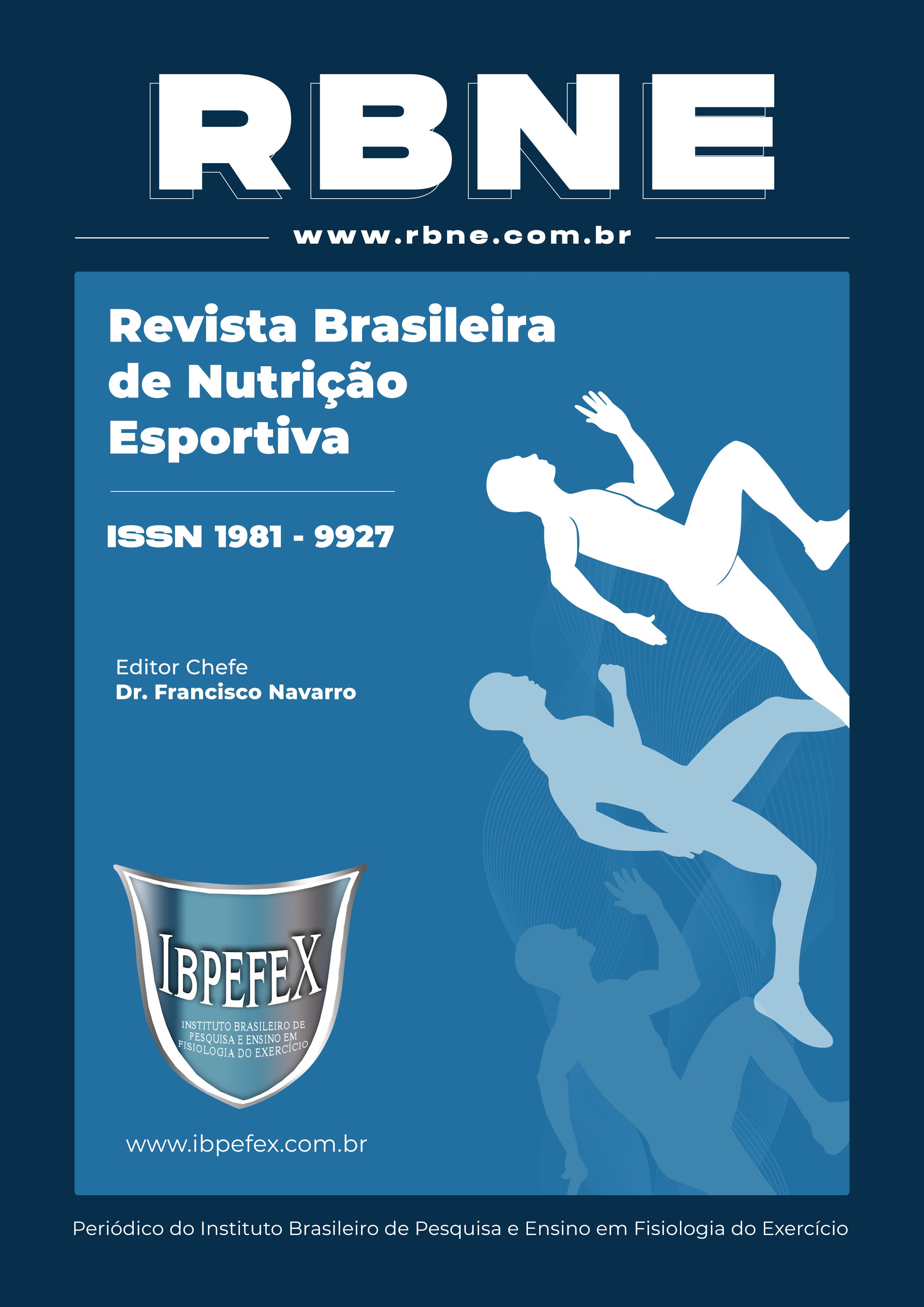athletes in the first official face-to-face championship after the COVID-19 pandemic
Abstract
martial art, with inclusion in the Summer Olympic Games, there is a lack of information about the supplementation pattern of competitive athletes. Objective: To evaluate the consumption of dietary supplements of athletes participating in the first official face-to-face championship, to understand, clarify and guide possible inadequacies. Materials and Methods: 47 athletes participated by filling in anamnesis with anthropometry, weekly training pattern, championship awards, supplementary consumption, among others. For that, informed consent was requested, for later completion of an electronic form. Results: There was a higher percentage of athletes who do not use food supplements; among supplement users there is a predominance of females and, in addition to several supplements, the use of whey protein and creatine. There is an indication of a specific supplementary standard for each sex, but in general the prescribing source and objectives indicate risks of adverse effects due to lack of adequate professional guidance. Conclusion: Study with the novelty of collecting post-pandemic supplementary standard data from competitive athletes who concurrently won awards in the championship. However, these can have risks to health and income due to the lack of professional monitoring for supplementary consumption for income
References
-Duiven, E.; van Loon, L.J.C.; Spruijt, L.; Koert, W.; Hon, O.M. Undeclared Doping Substances are Highly Prevalent in Commercial Sports Nutrition Supplements. J Sports Scince and Med. Vol. 20. Num. 2. 2021. p.328-338. DOI: https://doi.org/10.52082/jssm.2021.328
-Garthe, I.; Maughan, R.J. Athletes and Supplements: Prevalence and perspectives. Int J Sport Nutr Exerc Metab. Vol. 28. Num 2. 2018. p.126-138. DOI: https://doi.org/10.1123/ijsnem.2017-0429
-Goston, J.L.; Correia, M.I.T.D. Intake of nutritional supplements among people exercising in gym and influencing factors. Nutrition. Vol. 26. Num. 6. 2010. p.604-611. DOI: 10.1016/j.nut.2009.06.021
-Miragaia, D.A.M.; Trindade, M.N.P.; Pereira, C.A.B. Qualifications and Competence to Prescribe Dietary Supplements: Perception of Fitness Instructors. J Dietary Suppl. Vol.16. Num. 2. 2021. p. 1-21. 2021. DOI: https://doi.org/10.1080/19390211.2021.1963025
-OMS. Organização Mundial de Saúde. Obesidade: prevenindo e controlando a epidemia global. São Paulo. Roca. 2004.
-Outram, S.; Stewart, B. Doping Through Supplement Use: A Review of the Available Empirical Data. Int J Sport Nutr Exerc Metab. Vol. 25. Num. 1. 2015. p. 54-9. DOI: http://dx.doi.org/10.1123/ijsnem.2013-0174
-Rossi, L.; Tirapegui, J. Exercise dependence and its relationship with supplementation at gyms in Brazil. Nutr Hosp. Vol. 33. Num. 2. 2016. p. 431-436. DOI: https://dx.doi.org/10.20960/nh.128
-Rossi, L. Bioimpedance to assess the body composition of high-performance karate athletes: applications, advantages and perspectives. J Electr Bioimp. Vol.12. Num. 1. 2021a. p. 69-72. DOI: https://doi.org/10.2478/joeb-2021-0009
-Rossi, L. O Índice de Adiposidade Central (IAC) é uma alternativa para avaliação de atletas femininas de Karatê de alto rendimento durante a pandemia de COVID-19? Research, Society and Development. Vol.10. Num. 10. 2021b. p. 1-6. DOI: http://dx.doi.org/10.33448/rsd-v10i10.18475
-Silva, W.V.; Silva, M.I.A.G.; Toscano, L.T.; Oliveira, K.H.D.; Lacerda, L.M.; Silva, A.S. Supplementation prevalence and adverse effects in physical exercise practitioners. Nutr Hosp. Vol. 29. Num.1. 2014. p. 158-165. DOI:10.3305/nh.2014.29.1.6853
-Smith-Ryan, A.E.; Cabre, H.E.; Eckerson, J.M.; Candow, D.G. Creatine Supplementation in Women’s Health: A Lifespan Perspective. Nutrients. Vol. 13. Num. 1. p. 1-7. DOI: https://doi.org/10.3390/nu13030877
-Sobal, J.; Marquart, L.F. Vitamin/mineral supplement use among athletes: A review of the literature. Inter Journal Sport Nutr. Vol. 4. Num. 4. 1994. p. 320-334. DOI: https://10.1123/ijsn.4.4.320
-Wiens, K.; Erdman, K.A.; Stadnyk, M.; Parnell, J.A. Dietary supplement usage, motivation, and education in young, Canadian athletes. Intern J Sport Nutr Exerc Metab. Vol. 24. Num. 6. 2014. p. 613-622. DOI: https://10.1123/ijsnem.2013-0087
Copyright (c) 2022 Luciana Rossi, Homar Fayçal

This work is licensed under a Creative Commons Attribution-NonCommercial 4.0 International License.
Authors who publish in this journal agree to the following terms:
- Authors retain the copyright and grant the journal the right of first publication, with work simultaneously licensed under the Creative Commons Attribution License BY-NC which allows the sharing of the work with acknowledgment of the authorship of the work and initial publication in this journal.
- Authors are authorized to enter into additional contracts separately for non-exclusive distribution of the version of the work published in this journal (eg, publishing in institutional repository or book chapter), with acknowledgment of authorship and initial publication in this journal.
- Authors are allowed and encouraged to post and distribute their work online (eg, in institutional repositories or on their personal page) at any point before or during the editorial process, as this can bring about productive change as well as increase impact and impact. citation of published work (See The Effect of Free Access).






